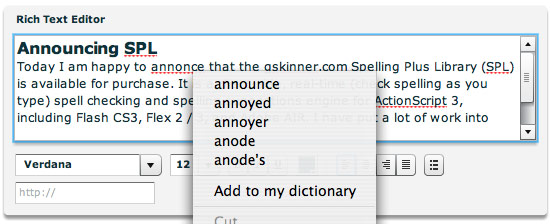I just released a new version of RegExr, the free online application for learning and testing regular expressions. This release includes a number of minor bug fixes, and a few big new features.
Real-time expression editing
Matches are now displayed in real-time as you edit your expressions.
Code sense
This build has early support for displaying inline code tips when you mouse over your expression.
Infinite match notification
The expression will now turn red if it will result in infinite matches.
New URL
You can now access RegExr at RegExr.com. This simply redirects to its permanent home at gskinner.com/RegExr/.
If you encounter any problems, have a feature request, or want to provide feedback, please leave a comment below.
Known issues:
The group pre-parser doesn’t do a very good job with nested groups. This only affects the group listing in the info field (bottom), not code sense or the groups listing for matches.
Code sense support is very early, and will likely have some quirks. Please let me know of any issues in the comments below.

